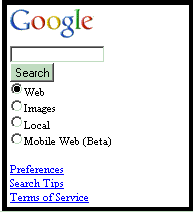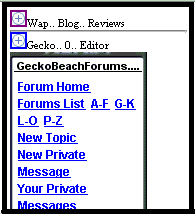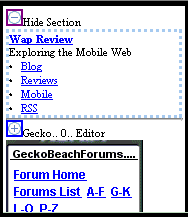
The Google Mobile site has been upgraded. Specifically the Web search for WAP2 phones. This lets you do a search of the web for regular desktop websites (there is also a Mobile Web search for finding WAP sites – which hasn’t been updated and works very well). The Web search function has been around for a while and has always allowed you to browse the sites it finds. What’s changed is that before the version of the web site sent to the phone was striped of images, forms and most text formating which is fine for static information sites but no good for any site that requires data entry. Plus, the web without images is pretty dull. All that’s changed now, Google now returns the page with images and forms intact. Well, actually forms on secure sites like banking and airline sites come up as read-only but on non-secure sites forms work well.

Google has a neat feature that I haven’t seen anywhere else. If Google’s transcoding engine finds something that looks like a typical navigation menu (bunch of links without any text between them) it hides the menu and replaces it with a plus sign icon and the first few letters of first menu item. You can see this in the second image. When you click on the plus sign, the menu expands (third image) and the icon changes to a minus sign, allowing you to collapse the menu block. Clearly the idea is to let you focus in the site’s content.
The other thing I like about Google is that they understand that you can’t send 50KB html pages to a phone. Large sites are broken up into multiple pages of less than 10 KB with Next and Previous links to navigate between them.

Most of the many mobile transcoding web to wap sites like IYHY, Phonifier or MobileLeap send you the whole site without any regard to whether you phone’s browser can handle that much data (most WAP2 browsers have trouble with anything much over 10KB) or if you can afford to pay for so many bytes.
Unfortunately, the Google’s transcoding engine is not so smart about images. No image resizing occurs, so very large images can get sent to the phone with the same issues of capacity and cost. Google now resizes images. Google allows you hide images but only after you have already loaded the page with the images! In my next post I’ll talk about another mobile search/transcoding site that does resize images.
Content: ![]()
![]()
![]()
![]()
![]() Usability:
Usability: ![]()
![]()
![]()
![]()
![]() xhtml
xhtml
I want to see pictures